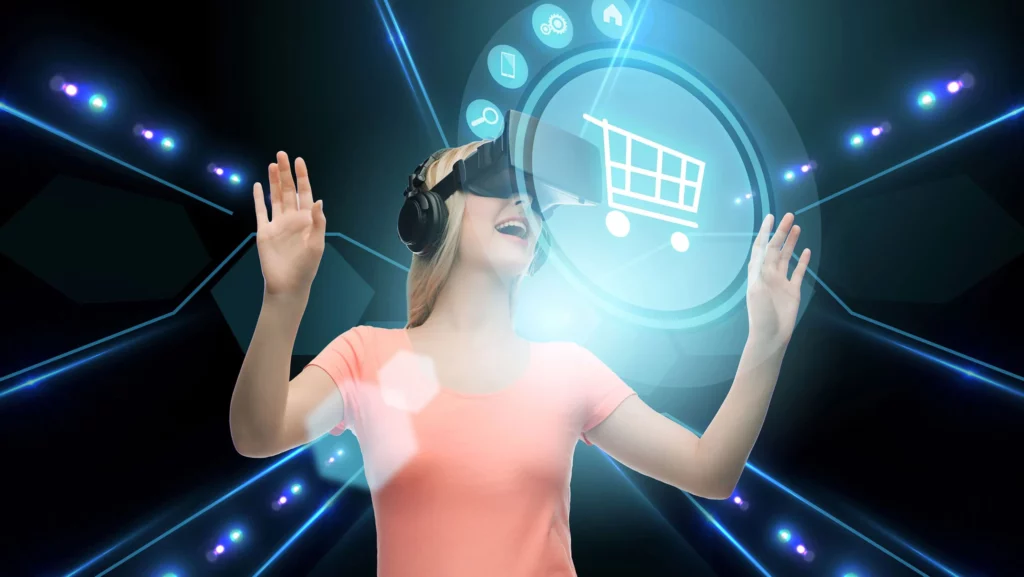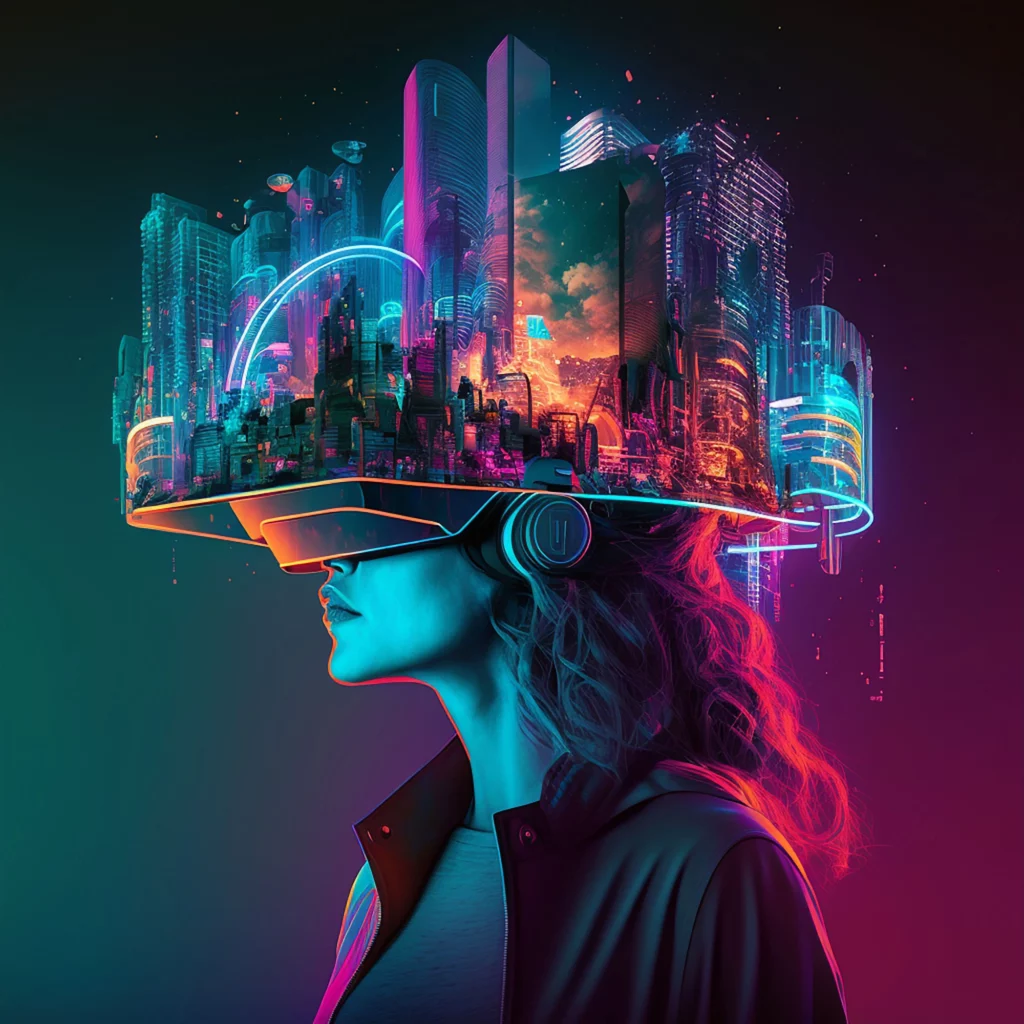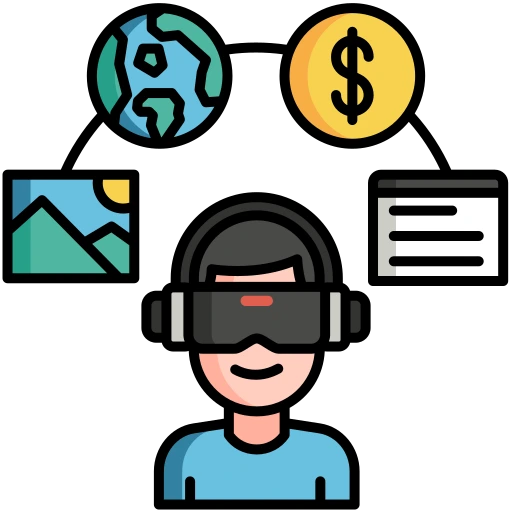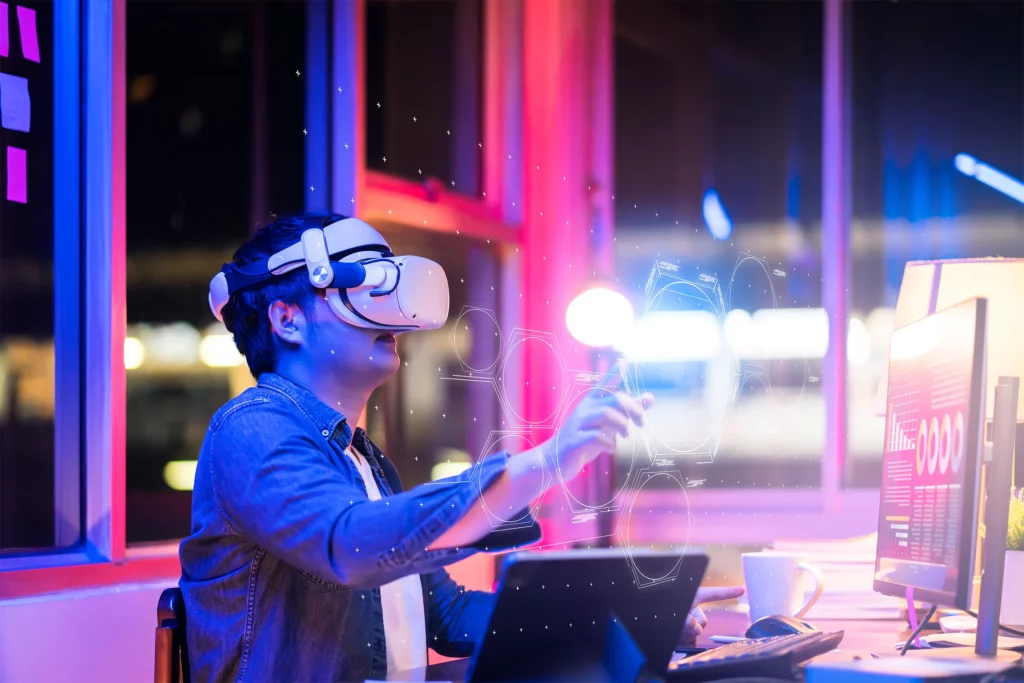Introduction
A futuristic project that used cutting-edge technologies and aimed to bring an immersive, engaging shopping experience to consumers on par with a real-world retail store. The metaverse, a virtual reality space where users interact with a computer-generated environment and other users. As businesses adapt to this new digital landscape, shopping experiences have begun to evolve as well. the metaverse on shopping, examining the benefits and challenges it presents to both consumers and businesses.
Case Study
Our team developed a Metaverse Retail Store with Blockchain integration.

Once they like the product, they can buy it right in the metaverse, and it will be delivered to their real-world address. Interestingly, the store accepted crypto-currencies as our client wanted to diversify their revenue stream, and for this, we integrated Metamask digital wallet.
Fully Functional Retail Store
Overview
Virtual stores and showrooms
- Detailed 3D representations of physical products
- Immersive, interactive experiences for consumers
- Potential for personalized product recommendations
Virtual currency and transactions
- In-app currency for purchasing virtual goods and services
- Integration with real-world payment systems
- Blockchain technology for secure transactions
Social aspects of shopping
- Virtual shopping with friends
- Social media integration for sharing experiences and product reviews
Strategy and implementation
- Building a virtual store and showroom
- Integration of social features and personalization tools

Services Offered

Conceptualization
- Client Goal Understanding
- Research on Retail Store Layout & Inventory Management
- Audience Behavior Analysis

Design
- Retail Store Layout
- Avatars Design
- Customer Journey
- Store Inventory
- Store Segment Design like clothing, Gifting, Shoes, Grocery etc

Development
- Realistic Animation Development
- 3D Inventory development
- Blockchain Integration
- Transparent Webpage Integration
- Crypto-walled integration
- Pixel Streaming

Deployment
- Testing and Fixing Issues
- Cross Platform Optimization
- Deployment and Support
Benefits
Convenience and accessibility
- Shopping from anywhere, at any time
- Greater access to international brands and products
Personalization and customization
- AI-powered product recommendations
- Customizing products in real-time to meet individual preferences
Enhanced customer engagement
- Gamified shopping experiences
- Augmented reality (AR) features for product visualization
Challenges and Concerns

Processing Large Volumes of Data Handling
Under the project, we incorporated a wide range of products across different categories. This required dealing with an enormous amount of data for all these products to develop animation and interaction as per the product. For this, we created a dedicated ‘Data Table’ on the Unreal engine for the convenient execution of this complex task.

Blockchain-based Live Webpage Integration
We integrated a blockchain-based live webpage with a transparent theme to display product descriptions and other related information about available inventory in the store. This was a challenge as, at the time, the technology was fairly new and it had to be a live webpage that was fetched from the website. We also integrated a website redirection so that users could also visit the website directly if they preferred.

Hyper Realistic Animation
At Queppelin, we believe in perfection, which demands going the extra mile and turning each and every stone along the way. For lifelike animation, we employed several out-of-the-book techniques like Inverse Kinematics and 16-directional animation that added realism to our avatars and their interactions with the environment.
Problems and Solutions
Technical limitations and compatibility
Problem:
- High-speed internet and compatible devices required
- Potential for digital exclusion in low-income or remote areas
Solution:
- Develop low-bandwidth and mobile-compatible versions of metaverse platforms
- Partner with governments and NGOs to improve internet infrastructure and accessibility
Privacy and security concerns
Problem:
- Collection and use of personal data
- Risks of hacking and identity theft
Solution:
- Implement strict privacy policies and data encryption techniques
- Utilize blockchain technology for secure transactions
- Educate users about potential risks and safe online practices
Conclusion

Recommendations for Future Research
- Investigate the long-term impact of metaverse shopping on consumer behavior
- Explore the potential for sustainable and eco-friendly metaverse practices
- Study the implications of virtual labor and its impact on employment and income distribution






